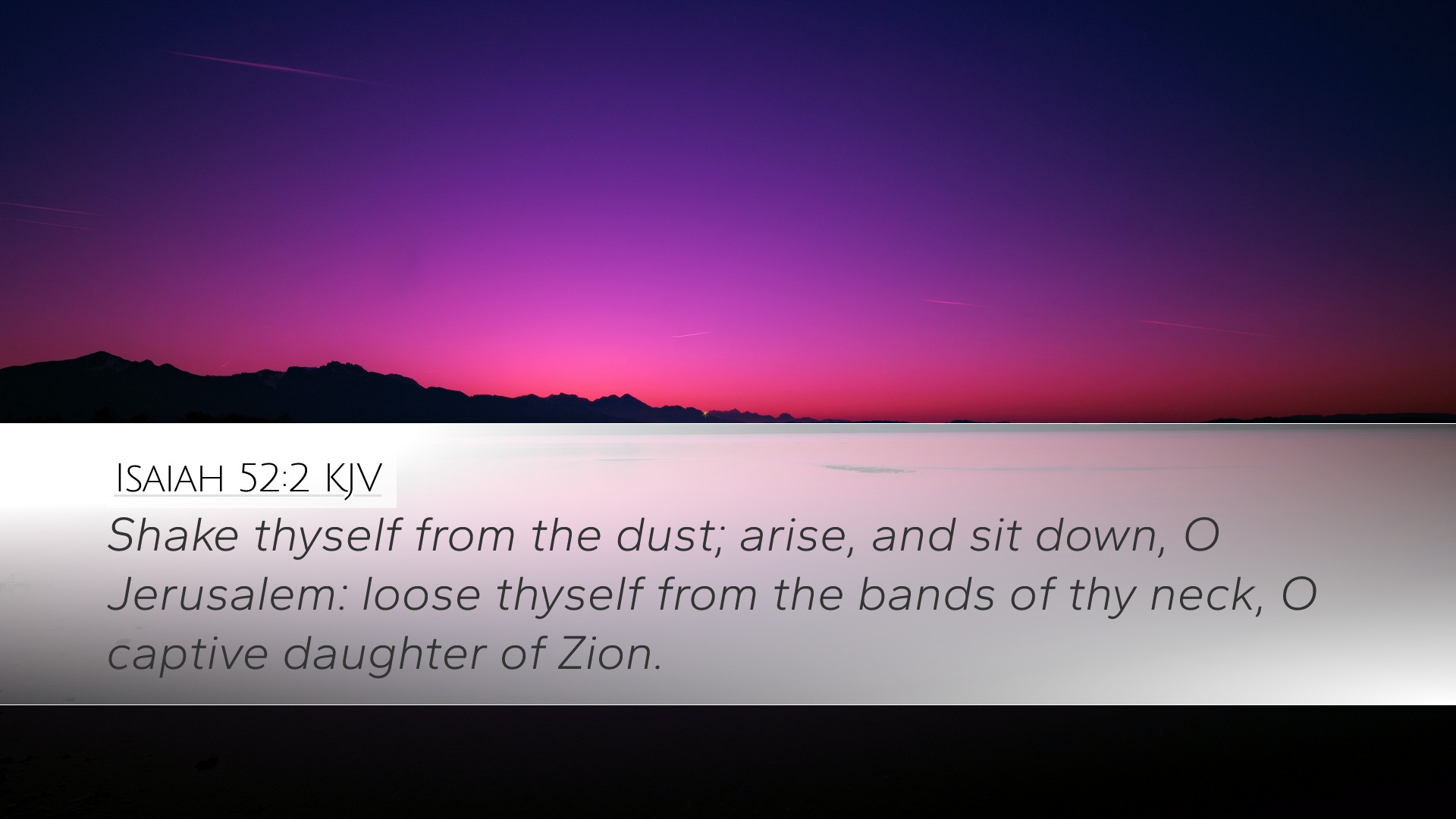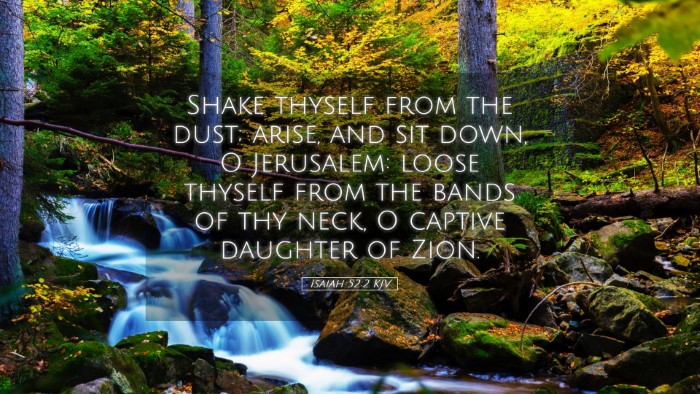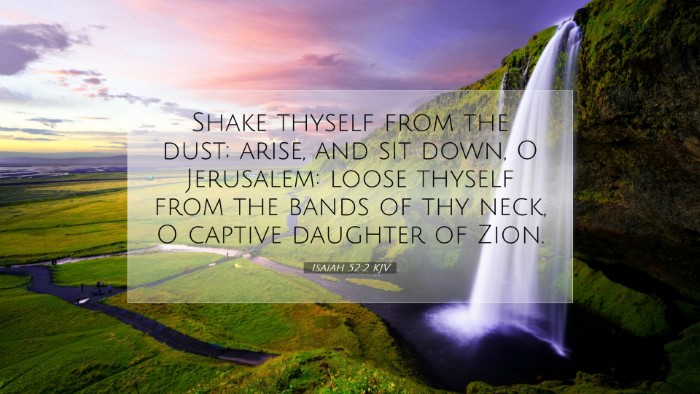Commentary on Isaiah 52:2
Verse: "Shake thyself from the dust; arise, and sit down, O Jerusalem: loose thyself from the bands of thy neck, O captive daughter of Zion."
Introduction
Isaiah 52:2 represents a powerful call to action for Jerusalem and the people of Zion. This verse embodies themes of redemption, awakening, and liberation, central to the prophetic literature of Isaiah. As we reflect upon this verse, we draw insights from notable public domain commentaries, including those of Matthew Henry, Albert Barnes, and Adam Clarke, providing depth and understanding for pastors, theologians, and students alike.
Contextual Background
The context of Isaiah 52 pertains to the plight of the Israelites during the Babylonian captivity. Isaiah, a prophet called to address the people of Judah, often oscillates between messages of judgment and hope. In this chapter, the shift is towards a proclamation of hope, heralding the end of their suffering and the emergence of salvation.
Verse Analysis
The Call to Action
The command "Shake thyself from the dust" indicates a directive to awaken from a state of despair and humiliation. According to Matthew Henry, this is not merely a physical act but symbolizes spiritual revival and an awakening to one's identity and inheritance in the Lord.
Symbolism of Dust
Dust often represents lowliness and defeat in biblical literature. Albert Barnes elaborates that dust signifies the condition of those in captivity, implying both a loss of dignity and a call to rise above such a state. The phrase suggests a reclamation of purpose and status as children of God.
The Assertion of Identity
Following the call to shake off despair, the command to "arise, and sit down, O Jerusalem" is significant. It implies an elevation from obscurity and is a restoration to honor and authority. Adam Clarke emphasizes that this denotes a return to rightful positioning, both spiritually and physically, where Jerusalem is not only reestablished as a city but also vindicated as a holy place.
Loosing the Bands of Captivity
The directive to "loose thyself from the bands of thy neck" speaks directly to the chains of bondage that held the Israelites captive. Here, Matthew Henry notes that it represents the psychological and literal bonds that restrained the people from experiencing the fullness of their freedom. This liberation is both an invitation and a process requiring active participation from the people of Zion.
The Captive Daughter of Zion
Referring to Jerusalem as the "captive daughter of Zion" reflects a personal and intimate relationship between God and His people. Albert Barnes points out that the use of 'daughter' highlights vulnerability and the need for protective restoration, likening it to a parent’s tender care for a child. This underscores the love and commitment of God towards His people.
Theological Reflections
- Redemption: The essence of this passage resonates deeply within the framework of redemption. It illustrates how God invites His people to move from a place of despair to one of freedom.
- Hope: This verse stands as a testament to the hope that pervades the prophetic writings of Isaiah. It reassures believers of God's faithfulness to restore and redeem.
- Action and Responsibility: The call to arise and shake off the dust implies an active faith. It challenges the notion of passivity and encourages believers to engage in their spiritual liberation.
Application for Today
Isaiah 52:2 serves as a powerful reminder for modern believers about the nature of spiritual awakening and liberation. In a world where many feel oppressed by sin, societal issues, or personal struggles, this scripture calls for a response of faith. Pastors and theologians can draw from this verse to convey messages of hope, urging congregants to seek liberation from their own forms of captivity.
Conclusion
In conclusion, Isaiah 52:2 encapsulates the essence of God’s promise for redemption and restoration. The insights from the commentaries of Henry, Barnes, and Clarke offer valuable perspectives that illuminate the text. For pastors, students, and scholars, understanding this verse not only enriches theological discourse but also encourages practical applications in the lives of believers seeking freedom and hope in Christ.


